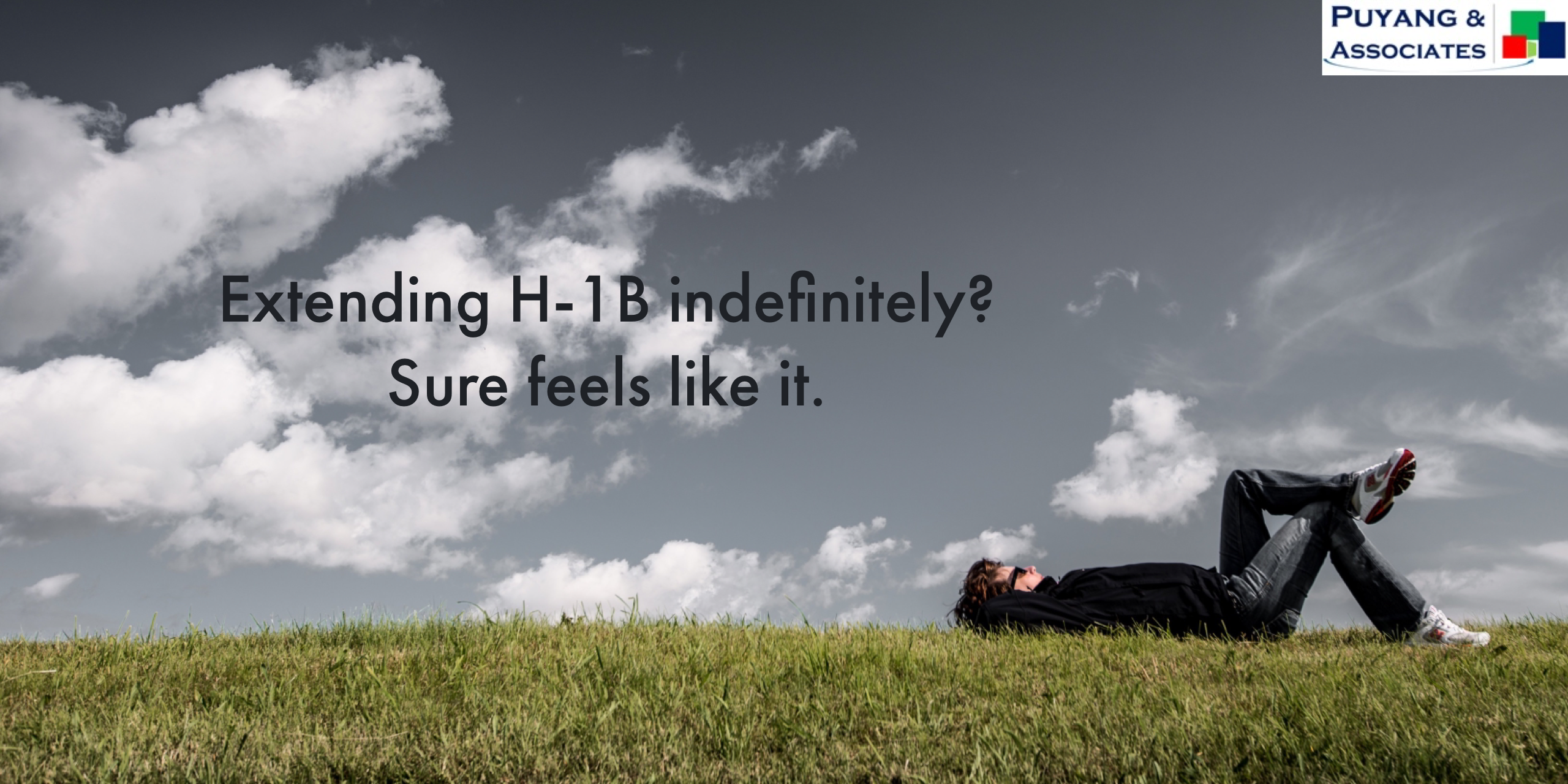Seasoned H-1B status holders are familiar with the regulations that allow them to extend their stay beyond the standard 6-year maximum period. We regularly see H-1B workers from India who have been in H-1B status for well over 10 years.
- Section 104(c) of AC21 provides that DHS “may grant” a three-year H-1B extension beyond the six-year maximum if the H-1B worker has an approved I-140 petition, and is eligible for green card but is unable to apply for a green card due to lack of visa availability.
- Sections 106(a) of AC21 provides for a one-year H-1B extension beyond the six-year maximum if 365 or more days have passed since a PERM application or I-140 petition has been filed on behalf of the H-1B beneficiary. This section does not apply if the beneficiary fails to file an adjustment of status application or apply for an immigrant visa within 1 year of an immigrant visa being authorized for issuance based on his or her preference category and country of chargeability.
In short, most understand the basic rule which is long as you have an approved I-140 or a delayed I-140/PERM (pending over one year), you may continue extending your H-1B status.
But can one really extend their H-1B for as many times as they want? Interestingly, the question rarely deserves an answer. Most would file their application for adjustment of status (green card) as soon as their visa number becomes current thereby ending any need for continued H-1B status.
Limitations
But there is a limit on how many times you can extend your H-1B. The keywords here are visa number availability. The regulations do not allow a beneficiary to extend H-1B if he/she fails to file an I-485 application within 1 year of an immigrant visa number becoming available (based on one or more I-140 approvals from prior employment).
In other words, do not delay filing your green card. If you do not file your green card application within one year of your PD becoming current, you lose your eligibility to extend H-1B beyond the 6-year maximum.
So who needs to watch out for this? Those who are purposefully delaying their green card filing due to some personal reasons. For example, they have an upcoming trip that they do not want to miss. There may be financial considerations for delaying the filing. Some beneficiaries may put their green card on hold because they are also applying as their spouse’s dependent. Sometimes, the beneficiary is unable to file even when they want to because they are no longer employed by the petitioner of the approved I-140 and that the employer is not willing to confirm that there is still a bona fide job offer.
It is therefore important to keep this limitation in mind when you enter the phase of having to extend your H-1B beyond the 6-year maximum. You should file for GC as soon as the visa number becomes current. If you are unable to file when PD becomes current, put a one-year deadline on your calendar as a reminder. If you absolutely cannot file, you must plan accordingly knowing that you might not be able to extend your H-1B status any further.
If you are no longer employed by the petitioner of the approved I-140 and that petitioner is unwilling to continue sponsorship on your behalf, you must find a new employer who will file a new PERM and a subsequent I-140 on your behalf. PD will be preserved if they are approved. The new I-140 will then put you in a position to file adjustment of status once PD becomes current.
For most H-1B beneficiaries, filing H-1B extensions feels like a perpetual process as long as they have an approved I-140. But for some, it’s important to understand its limitations and potential consequences.
Related post: I’m in H-1B Status and Just Got Laid Off. What are My Options?
